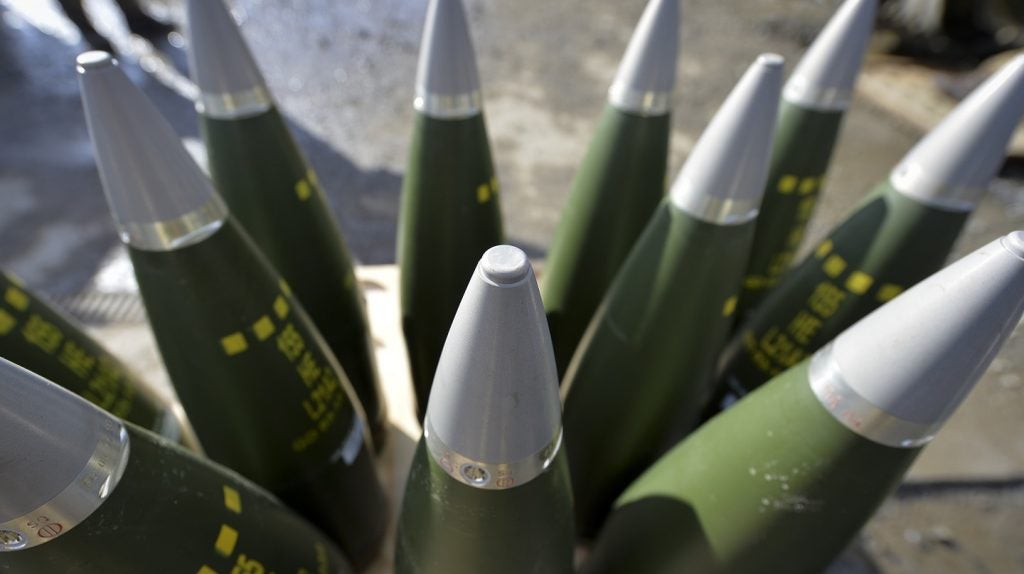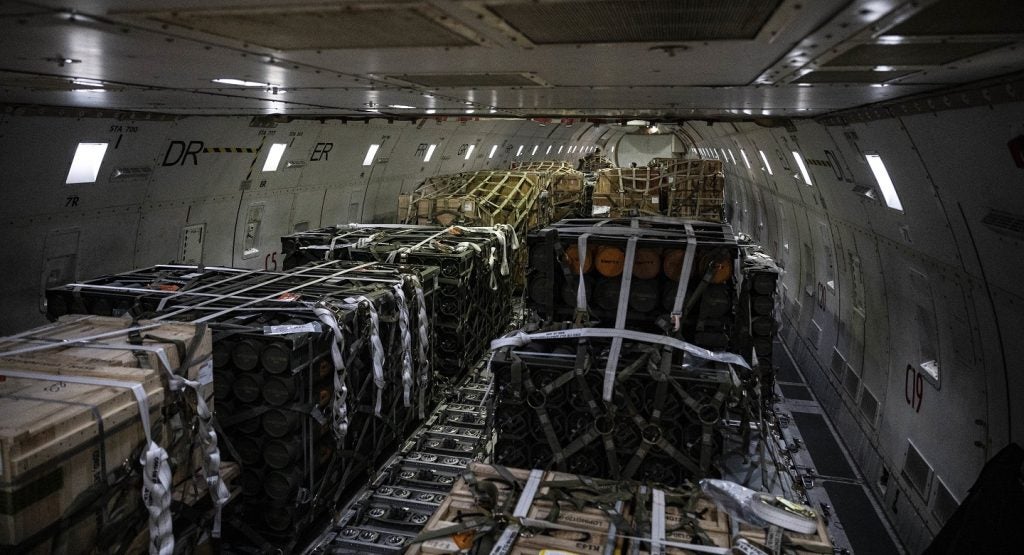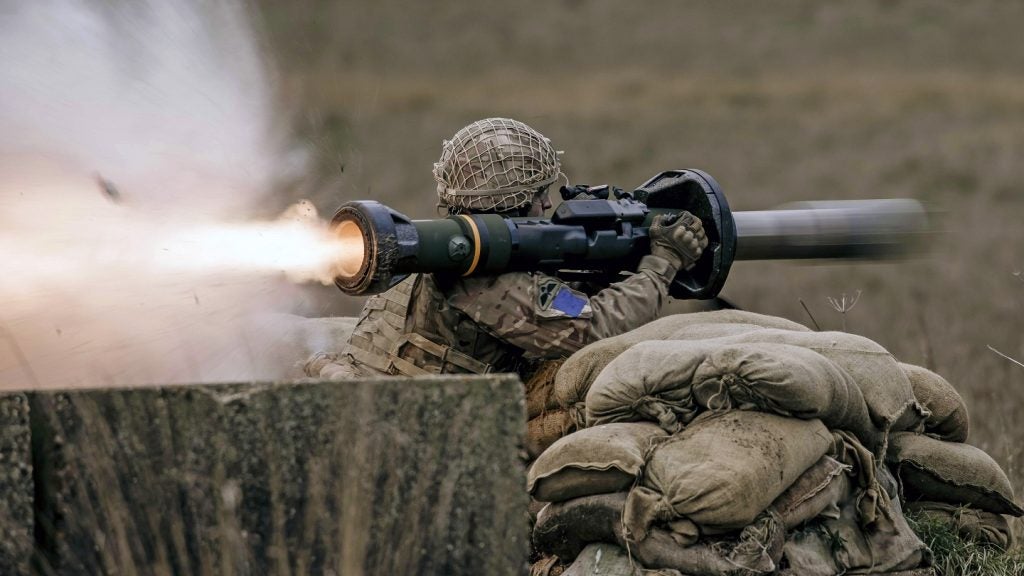A series of newly released figures on UK military equipment provision to Ukraine has shed further light on the scale of London’s support of Kyiv, with millions of rounds of small arms ammunition and hundreds of thousands of anti-tank missiles and artillery ammunition.
Figures released on 25 July 2024, by the UK government, state that the country’s Ministry of Defence has supplied more than 12,000 anti-tank weapons to Ukraine since February 2022. Known anti-tank weapons that have been provided have been the NLAW anti-tank munition, which was widely used in the first months after Russia’s large-scale invasion of its neighbour.
Other munitions provided include six million rounds of small arms ammunition, 400,000 artillery shells, and more than 2,100 “air defence systems”, likely referring to systems such as the Advanced Medium-Range Air-to-Air Missile (AMRAAM), Advanced Short Range Air-to-Air Missile (ASRAAM), HVM Starstreak, Lightweight Multirole Missiles (LMM).
While it is not clear exactly how much of the provided stock has come from the UK’s own ammunition stockpiles and what has been sourced from the international market due to national security reasoning, whatever donations have come from within the UK’s own inventory cannot be readily replaced at speed.

In recent months the UK has sought to reactivate production lines of the NLAW, built in Belfast by Thales UK, among other ammunition. In December 2022 the UK signed a £229m ($294.6m) for the manufacture of “thousands” of NLAW munitions, deliverable between 2024-2026.
Highly capable system such as the Brimstone anti-tank missile have also been provided in significant quantities to Ukraine, with hundreds of units known to have been committed.
Such has been the success of Ukraine's Brimstone use that the UK seemingly has sought to copy some deployment practices, under Project Wolfram.
In July 2023, the UK’s MoD’s procurement arm, Defence Equipment & Support, placed a “significant order” for 155mm artillery shell production, intended to increase the UK’s stockpile and deliver an eight-fold increase in production capacity. A follow-on contract also committed hundreds of million of pounds to additional 155mm, 30mm, and small arms ammunition manufacture for UK stockpiles.
In some instances, it can be discerned which ammunition has been sourced from the international market, such as the package announced by the UK on 11 July for up to 120,000 rounds of 152mm artillery rounds. The British Army does not utilise 152mm artillery shells, instead using 155mm and 105mm in its AS90/Archer self-propelled howitzers and L118 light guns respectively.
Further, regarding air defence systems, the UK government states that on behalf of the International Fund for Ukraine, the UK MoD has placed contracts for more than 500 air defence systems, indicating the possible provision of 1,500 from existing available resources, potentially from its own inventory.
UK artillery ammunition provision dwarfed by US
While significant, the quantities provided by the UK represent only a portion of ammunition given to Ukraine so far, with the US contributing 800,000 rounds of 105mm, 10,000 203mm, over 400,000 152mm, around 40,000 130mm, and 40,000 122mm in artillery ammunition alone.
In addition, the US has provided more than 10,000 Javelin anti-armour systems and in excess of 90,000 anti-armour munitions of other systems, as well as more than 9,000 Tube-Launched, Optically Tracked, Wire-Guided (TOW) missiles.
In smaller calibres, the US has provided nearly two million rounds of 25mm ammunition and more than 400 million rounds of small arms ammunition and grenades.

The European Union too is seeking to increase its own provision of 155mm artillery ammunition to Ukraine through the ASAP programme, commitments hundreds of millions of euros in grants to member states to ramp up production.
Artillery capability and ammunition supply has been proven in the Ukraine-Russia war to be one of the key differentiators of success on the battlefield, with hundreds of artillery pieces and howitzers provided to Kyiv by its Western allies.
Where Ukraine’s artillery capability ran short at the end of 2023 due to political infighting in Washington preventing a much-needed military assistance package being sent, Russia was seen to capitalise, seizing Avdiivka and other key towns in its ongoing 2024 summer offensive.









